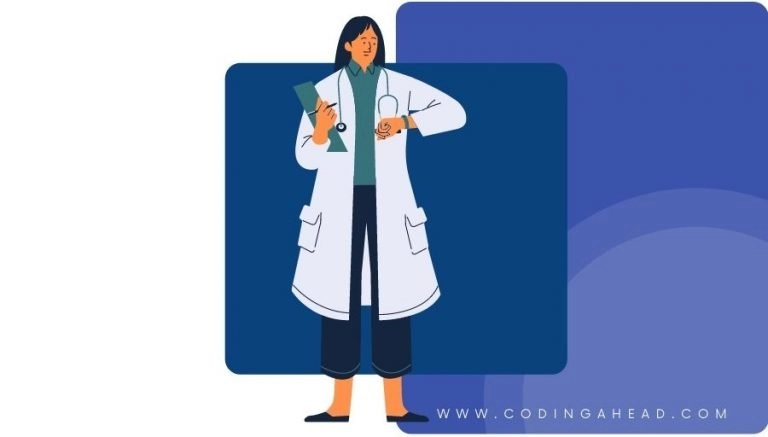How To Use CPT Code 70487
CPT 70487 describes the use of computed tomography (CT) to examine the maxillofacial area, specifically the upper jaw and face structures, with the administration of contrast material(s). This article will cover the description, procedure, qualifying circumstances, appropriate usage, documentation requirements, billing guidelines, historical information, similar codes and billing examples.
1. What is CPT Code 70487?
CPT 70487 is used to describe the utilization of computed tomography (CT) to evaluate the maxillofacial area, which includes the upper jaw and face structures. This procedure involves the injection of contrast material(s) to enhance the visibility of internal structures or organs during the examination.
2. Official Description
The official description of CPT code 70487 is: ‘Computed tomography, maxillofacial area; with contrast material(s).’ This code specifically refers to the use of CT imaging to assess the upper jaw and face structures, with the administration of contrast material(s) to improve visualization.
3. Procedure
- The healthcare provider begins by positioning the patient on the CT scanner table, which will slide into the scanner.
- Once the patient is in position, the provider administers contrast material(s) through various routes, such as intravenous injection.
- The CT scanner rotates an X-ray tube and X-ray detectors around the patient, capturing multiple X-ray images of the maxillofacial area.
- These images are then processed by a computer to create cross-sectional slices, allowing the provider to examine the upper jaw and face structures in detail.
- The CT scan helps identify any abnormalities, such as tumors or foreign bodies, within the maxillofacial area.
4. Qualifying circumstances
CPT 70487 is typically performed when there is a need to evaluate the upper jaw and face structures using CT imaging. The use of contrast material(s) enhances the visibility of internal structures, aiding in the identification of tumors, anatomical abnormalities, or foreign bodies. It is important to note that the contrast material must be administered intravascularly, intraarticularly, or intrathecally to qualify for this specific code.
5. When to use CPT code 70487
CPT code 70487 should be used when a healthcare provider performs a CT scan of the maxillofacial area with the administration of contrast material(s). This code is appropriate when there is a need to evaluate the upper jaw and face structures using CT imaging, and when contrast material(s) are utilized to enhance visualization. It is important to review the specific documentation requirements and guidelines to ensure accurate reporting of this code.
6. Documentation requirements
To support a claim for CPT 70487, the healthcare provider must document the following information:
- Indication for the CT scan of the maxillofacial area
- Details of the contrast material(s) administered
- Date and time of the procedure
- Specific anatomical areas evaluated
- Findings or abnormalities identified during the CT scan
- Signature of the healthcare provider performing the procedure
7. Billing guidelines
When billing for CPT 70487, it is important to ensure that the procedure meets the specific criteria outlined in the code description. The use of contrast material(s) is a key factor in distinguishing this code from similar codes. It is also important to review payer policies regarding the reporting of contrast material separately, as some payers may require the use of additional supply codes or HCPCS Level II codes. Modifier 26 should be appended to the radiology code if only the physician’s interpretation is being reported, while modifier TC should be used for reporting only the technical component. However, it is essential to consult individual payer guidelines for specific requirements and exemptions.
8. Historical information
CPT 70487 was added to the Current Procedural Terminology system on January 1, 1990, with a code change on January 1, 2003. Since then, there have been no further updates or revisions to the code.
9. Examples
- A patient undergoes a CT scan of the maxillofacial area with the administration of contrast material(s) to evaluate a suspected tumor in the upper jaw.
- A healthcare provider performs a CT scan of the face structures with contrast material(s) to assess the extent of facial trauma following an accident.
- A patient with chronic sinusitis undergoes a CT scan of the maxillofacial area with contrast material(s) to identify any anatomical abnormalities or blockages.
- A healthcare provider utilizes CT imaging with contrast material(s) to evaluate the presence of foreign bodies in the upper jaw and face structures of a patient who experienced a traumatic injury.
- A CT scan of the maxillofacial area with contrast material(s) is performed on a patient with suspected dental pathology to assess the condition of the teeth and surrounding structures.
- A healthcare provider utilizes CT imaging with the administration of contrast material(s) to evaluate the upper jaw and face structures for the presence of infection or inflammation in a patient with persistent symptoms.
- A patient undergoes a CT scan of the maxillofacial area with contrast material(s) to assess the extent of bone fractures and soft tissue injuries following a facial trauma.
- A healthcare provider performs a CT scan of the face structures with the administration of contrast material(s) to evaluate the presence of tumors or abnormal growths in a patient with unexplained facial swelling.
- A CT scan of the maxillofacial area with contrast material(s) is performed on a patient with suspected sinus disease to assess the condition of the sinuses and identify any blockages or abnormalities.
- A healthcare provider utilizes CT imaging with the administration of contrast material(s) to evaluate the upper jaw and face structures for the presence of cysts or other fluid-filled lesions in a patient with recurring symptoms.


